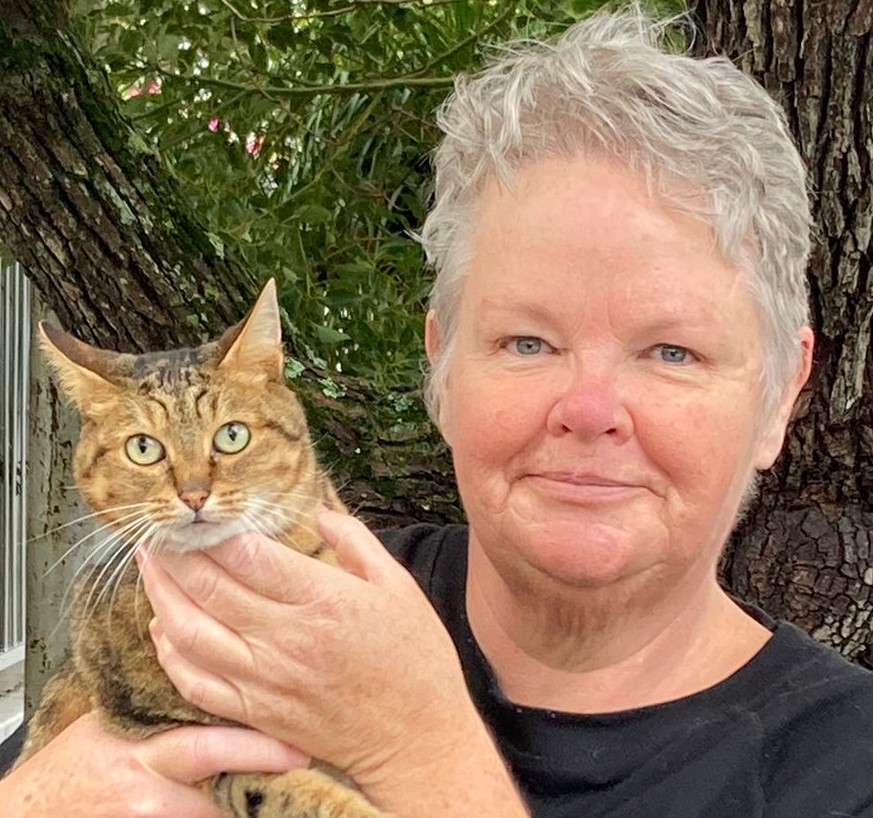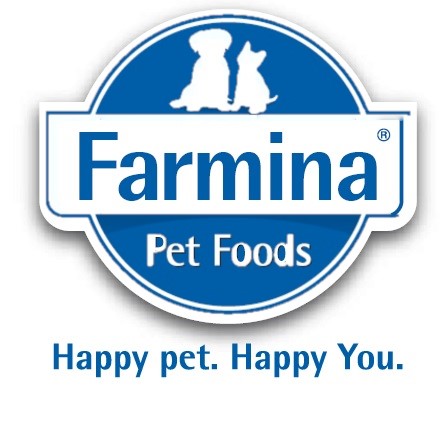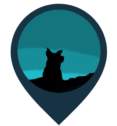
Carynne Hooper is the founder of Animal Lifeline, a non-profit organisation in the Western Cape that focuses on sterilisation of pets and prevention of suffering through education and community outreach.
I always seem to fight with Father. Not my own, he left this world many years ago—it’s Father Time I’m referring to. My preferred interview subjects, or more politely, my guests are Busy People! They seem to possess a cornucopia of great material. I mean the fighters of the good fight, the warriors who are so consumed by their passion that they have little time for gabbing about it.
And so conducting an interview is generally a race against time. Happily, not today. I don’t mean to infer that my guest isn’t hellishly busy. Her roles include: Business owner, monitoring and evaluation specialist, public officer, fundraiser, spokesperson, managing and operations director, fetcher and carrier.
Carynne Hooper remains an unflagging warrior but today, she is taking a breath to talk to me about the creation of Animal Lifeline. When two people share similar ideals and believe in the same fundamentals, an interview has no sense of time—we have chewed the fat for just over two and a half hours.
I ask her about the rocky pathway that brought her this far. She summons memories that to her feel like a lifetime ago. As a social worker in Johannesburg, she specialised in the overlap between eating disorders and survivors of sexual abuse. After moving to the Cape in 2008, she worked at the DSK in Tamboerskloof, volunteered for The (then) Clothing Bank and worked at at HELP (Homework – Enrichment – Life Skills – Programme) in Muizenberg. Despite focussing on literacy and numeracy for kids, HELP also prioritised life-skills including pet care.
A plan is hatched
One day Carynne was walking two of the HELP House dogs. It is unusual to hear thunder in the Cape and so the spooked dogs bolted when the heavens suddenly roared. She was beside herself with worry but after some tireless networking with various community groups, Barry and Tee-tee were recovered. Ever resourceful, her traumatic experience inspired her to create a local lost and found platform called PetConnect in 2016.
PetConnect provided a stepping stone to the next chapter in her journey. In fact, she and other AL volunteers still Administrate and Moderate a number of Cape Town lost and found Facebook groups that started from the PetConnect venture.
“What inspired the creation of Animal Lifeline?” I asked. Carynne’s views may be controversial to some but they come from someone who has witnessed enough suffering:
“There are countless rescuers and animal shelters in this country but their efforts are futile unless we start to place prevention and education at the top of our priorities. This does not mean to undermine the efforts of the rescuer or the animal shelter, but overpopulation of pets is a chronic issue which shows that our current (and seemingly unchanging) methods of control in this country are outdated and simply do not work” she explains.
Carynne dreams of a system that might rank all the welfare related non-profit organisations according to their roles, where funding is prioritised for those that place the greatest focus on preventative measures, namely sterilisation and education. She says that a surrendered or rescued pet will be replaced in an instant. It reminds me of a sinkhole that fills up with underground water no matter how much you bail.
.
A seed begins to grow
Handouts encourage hands to always be out, whereas a leg-up elevates to independence.
During Covid in 2020, AL partnered with DARG (Domestic Animal Rescue Group) to feed pets of empoverished owners who had lost their incomes due to the pandemic in Hout Bay. AL assisted a number of entities to raise funds and follow best practice outreach principles in Hangberg.
When lockdown restrictions were lifted and sterilisation was again possible, AL resumed their outreach efforts in the Southern Cape Flats and other under-resourced areas locally, keeping their support ‘at home’. More recently AL began assisting with food for sterilised pets of indigent community owners in Kenwyn. Animal Lifeline has supported several sterilised feral cats both at a city government hospital as well as in Kenwyn. Poverty coupled with a failure to sterilise leads to dumping of cats which then become ‘feral’.
Apart from local outreach, AL conducts a monthly sterilisation event in Reedlingshuys as part of their rural outreach. Staffed by AL outreach volunteers and assisted by West Coast CVC (Community Vet Clinic) West Coast. Through the sale of second hand donated goods, the organisation is able to cover the cost of up to 40 pets per month. Their aim is to reach at least 75% sterilisation saturation in this sorely under resourced rural community.
AL also partners with The Butterfly Effect in the Overberg to fund about 8 sterilisations of pets in Molteno (Grabouw) per month.
Finding support
As Carynne lists all of AL’s endeavours, I begin to wonder what is driving it all. I am disheartened when she raises a single hand to count off the people that donate money to the organisation. The truth, she says, is that sterilisation is not a very popular money-raiser. There seems to be a lot more money for rescue, fostering and shelters—more ‘ag shame’ value. People don’t seem to understand the link between preventing unwanted animals and the unavoidable need to find homes for the seemingly endless supply of these animals. Again, the rescuers and shelters are desperately trying to catch the overflow. Someone has to provide this service or thousands of otherwise healthy pets would have to be euthenased in this country every day. I understand both sides of this conundrum but I also understand that if the groundwater was cut off from that sinkhole, it wouldn’t keep filling up and overflowing.
So where does all the money come from to fund AL’s work?
I’ve always worked in welfare so I share Carynne’s sentiment when she says that these days fundraising is a competitive sport. With so many non-profit organisations that compete for vital funding as well as a government that does little to help, it’s little wonder that she only used one hand. But, I am starting to realise that this is not a person who gives up; she knows how to make a buck. She laughs and says, “I don’t want their money! Just give me their stuff!”
In the early hustle, Carynne and her volunteers used to sell donated goods at community markets. The effort, she explains, is stupendous: Procurement, fetching, storing, cleaning, price-tagging, delivering, packing in, packing out, driving, driving and driving. And most of her volunteers stuck at it, saying, “It’s for the animals.”
The struggle is real
The one advantage (for Animal Lifeline) of Covid was that it put an end to public gatherings and forced the team to look for alternative ways to generate funding. Enter online charity shops. Today, Carynne only has to procure the donations, sending most of the viable items to Instagram sellers. The downside is that the seller takes a cut, but it has made a huge difference in Carynne’s focus. Not having to wash, photograph and send the merchandise to buyers personally, she has time to make more important decisions.
https://www.instagram.com/doitforthedogsza/
https://www.instagram.com/thriftypaws123/
Apart from these options, AL has a lively WhatsApp retail group as well as the auction site on The Butterfly Effect’s FaceBook page. Yaga is another website for pre-loved goods that they use.
https://www.facebook.com/TBEAuctions
https://www.yaga.co.za/mustlovecats
There are Animal Lifeline trolleys at Constantia Emporium and Constantia Village shopping centres that allow shoppers to donate pet food as well.
When I explore the donated food aspect further, Carynne makes me laugh out loud.
“Eye of potato, end of tomato, cigarette butt and tea bag—that’s about as good as it gets for some pets!” she says with irony.
I know it’s not funny, but it’s a reality for some. Carynne believes in providing those pets that are faced with the aforementioned meal with at least one decent feed a day. Food for pets, she says, is one aspect that disappears when poverty strikes. Nonetheless, support is only offered to owners who have sterilised pets. Also, to encourage independence, support feeding is generally only offered for a maximum of two years.



Hill’s, Packleader (Orijen and Acana)and Farmina are three major pet food manufacturers that generously donate to AL quarterly. Absolute Pets, a pet food retailer, donates pet food and parasite treatment from time to time..

Carynne is immovable on the quality of the pet food that the organisation distributes. It is for the sake of every animal’s well-being that she avoids cheap foods that do not provide adequate nutrition.
As we sit there trying to cram in as many topics as possible, I am struck by Carynne’s tenacity. Her journey hasn’t been easy and yet she is filled with enthusiasm and hope. Here is a person who has dedicated her life to a cause without seeking reward. Nobody asked her to stand up for animals, nobody pays her. Her good fight gives me the ‘feelies’, makes me humble. Her ambition is purely altruistic. Her ego is on the back seat.
There are countless people in this country who are quietly getting on with making the world a better place by acting locally. Carynne is supported by about 12 dedicated AL volunteers who share a vision of hope and we can take comfort that they care about the bigger picture while keeping the love at home.
© Liz Roodt 2023
